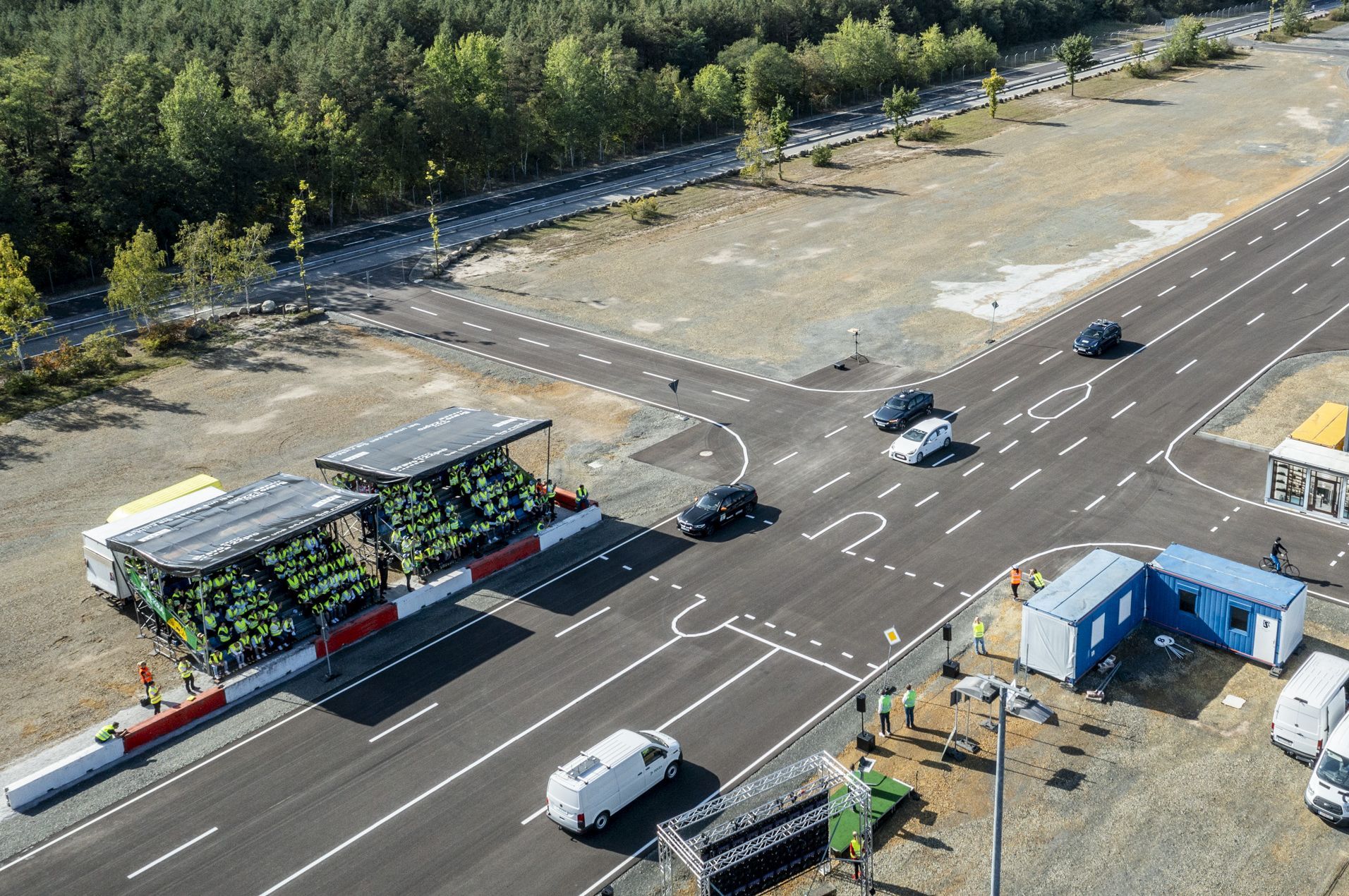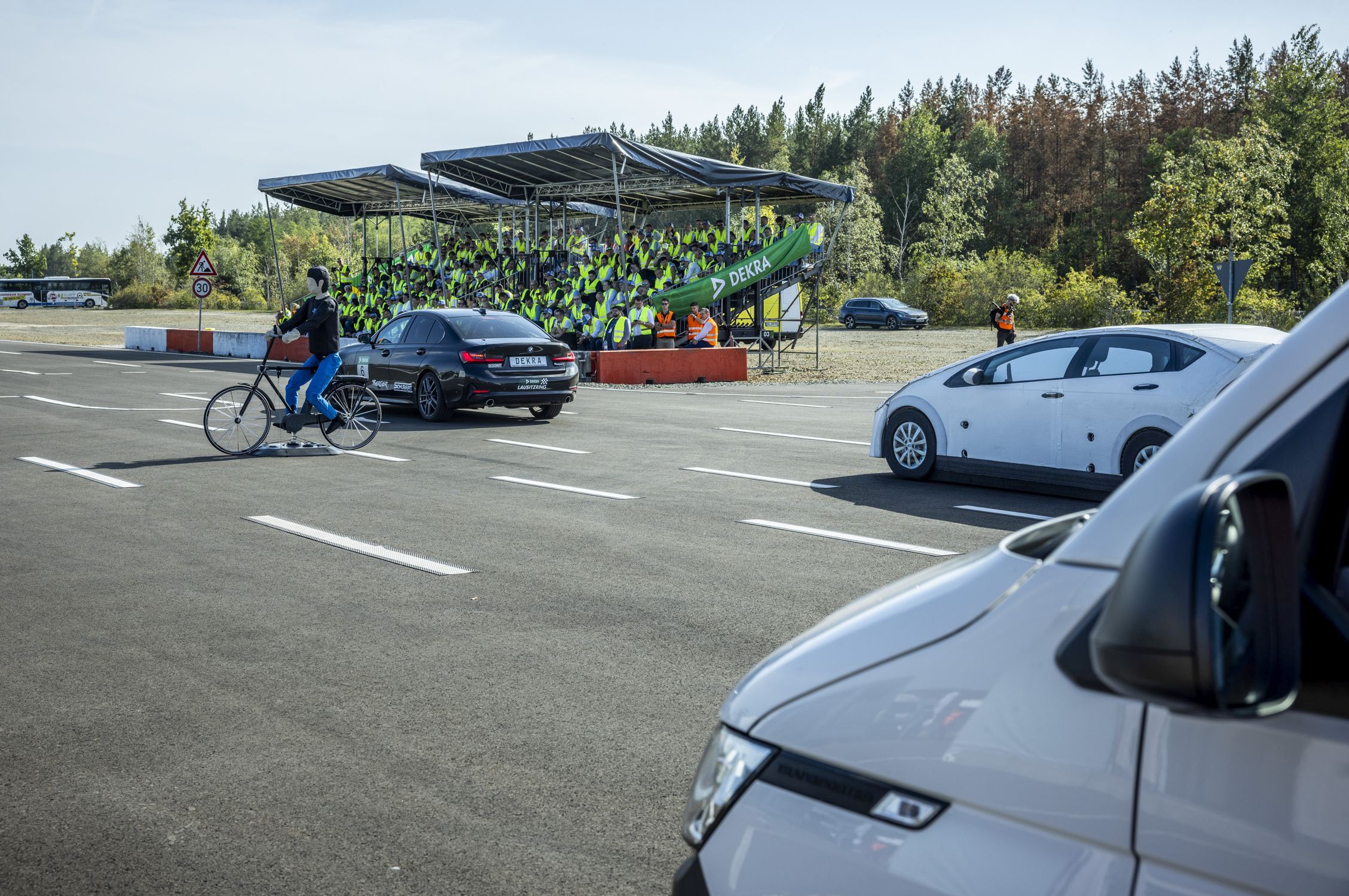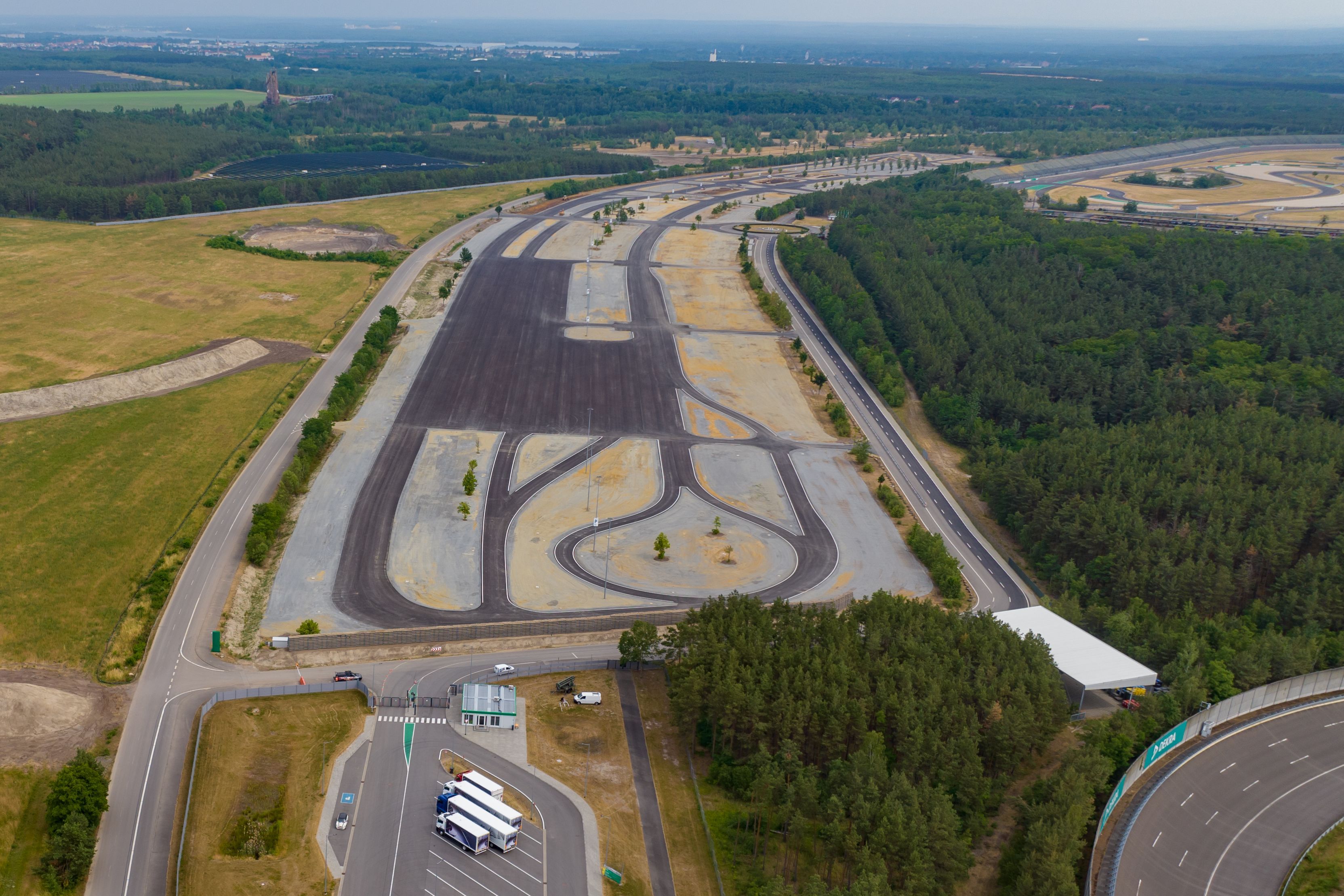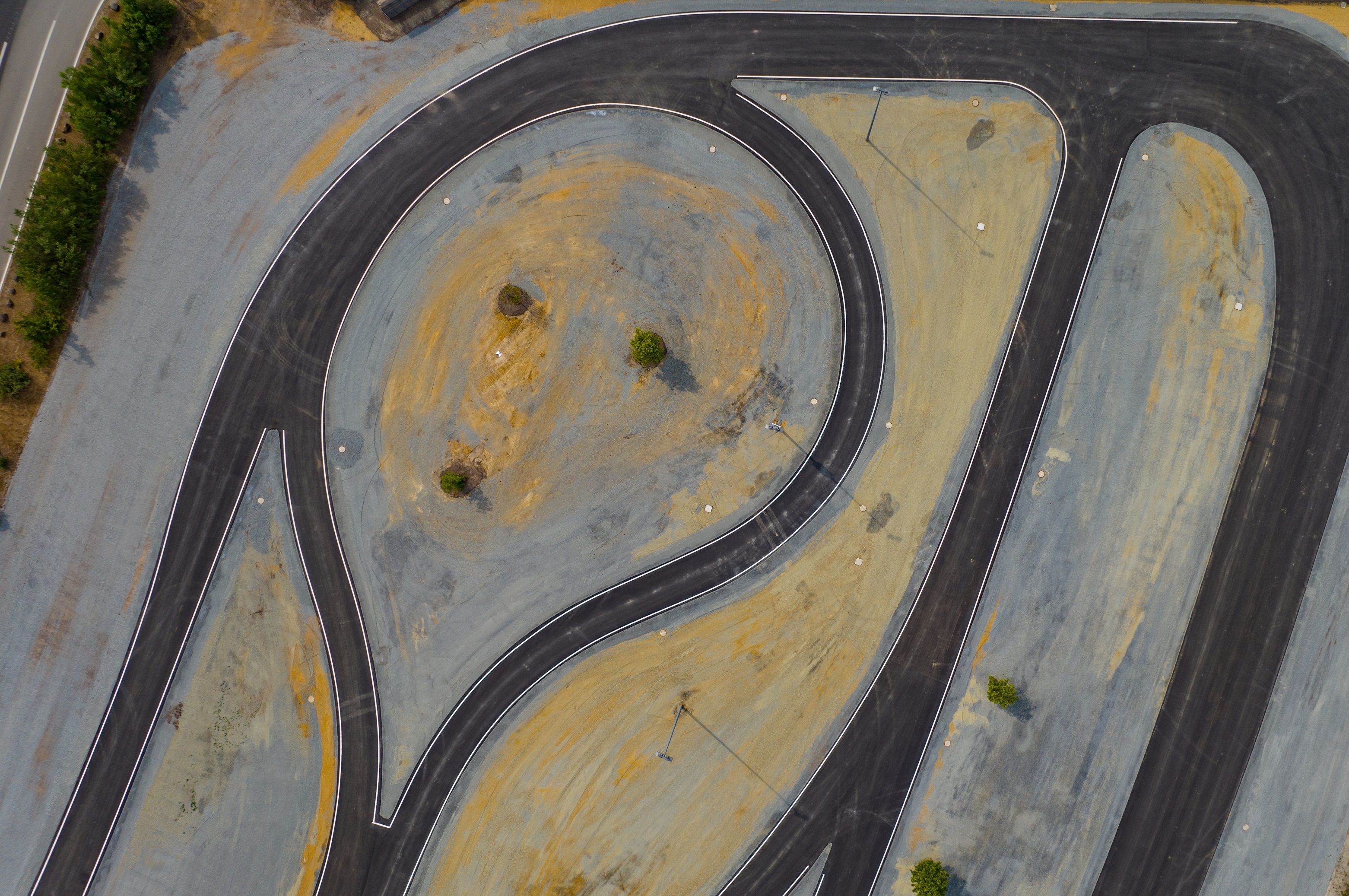Maximally Complex Test Scenarios
Author: Matthias Gaul
As part of the LAURIN research project, real accident constellations can be recreated any number of times at the DEKRA Lausitzring. Developers from the automotive and supplier industry can use this to further optimize the effectiveness of assistance systems and automated driving functions, even in critical traffic situations. Only a little over one and a half years into the project, the mid-term results are very positive.
Be it automatic lane keeping, acceleration and braking adapted to the surrounding traffic conditions, emergency braking at the tail-end of a traffic jam, or automated emergency braking when turning right, to name just a few examples: Driver assistance systems can recognize critical traffic situations at an early stage, warn of dangers, and, if necessary, actively intervene in the situation. In future, automated driving functions will allow drivers to turn their attention to other things while driving. Before approval or series production, however, the respective systems must be thoroughly tested and evaluated to ensure optimal function at all times. And this is exactly what DEKRA does at the DEKRA Technology Center at the Lausitzring in Klettwitz, Brandenburg. One of the special features of Europe’s largest test site for automated and connected driving, which covers 540 hectares, is the reproducibility of almost all scenarios. In other words, the systems and functions can be tested any number of times under the exact same conditions.
To this end, DEKRA digitized several test tracks at the Lausitzring using a 3D laser scan as part of the LAURIN research project, which was launched in May 2022 and is scheduled to run for three years. This high-precision data can be combined with drone flights to flexibly adapt the track design within a few hours, for example by adding road markings and traffic signs as needed. This means that an updated digital twin of the test routes is available at all times for the specific planning of tests to safeguard highly automated driving functions. DEKRA is LAURIN’s consortium leader. Other partners involved are the Fraunhofer Institute for Transportation and Infrastructure Systems IVI, as well as iMAR Navigation, Smart Mobile Labs, and TraceTronic. The project, which costs around 4.2 million euros, is being funded by the Federal Ministry for Digital and Transport with a total of 2.45 million euros as part of the mFUND innovation campaign.


Swarm tests in reality and in the digital twin
As already mentioned, it is an essential part of the project to be able to reproduce practically any real road situation or scenario on the test tracks at the DEKRA Lausitzring. This is founded on the existing variety of tracks, especially the new flexible city courses opened last summer. Another core foundation is the detailed accident data in Germany, recorded by the police since 2018 and compiled by the Fraunhofer Institute IVI. The processes at the Lausitzring can be automated to a high degree and form the basis for testing future functions of so-called cooperative, networked, and automated mobility. “One example of this would be how, in future, infrastructure facilities such as traffic lights can be integrated into the scenarios and send information to vehicles or other road users – for example about traffic light phases or objects detected by sensors in the infrastructure,” explains consortium leader Felix Kocksch, who is responsible for funding projects in the ADAS testing department at DEKRA Automobil GmbH at the Lausitzring.
In addition to the test tracks, the swarm test methodology is the second main pillar of the LAURIN research project. Various scenarios can be carried out both in reality and with the test site’s digital twin. The software from project partner TraceTronic makes it easy to depict the maneuvers of the moving objects in the simulation. “This gives us optimal opportunities to compare the real tests with virtual tests and make them directly comparable,” says Felix Kocksch. Another important building block for scenario-based testing in the swarm is the 5G campus network. Large areas of the test site at the DEKRA Lausitzring are already covered by a private 5G network; further expansion is ongoing. Project partner Smart Mobile Labs is working on configuring the 5G infrastructure to meet requirements.
Precise object control
How all of this works together was demonstrated with a swarm test involving six participants during the project’s mid-term review at the carhs GmbH event “The ADAS Experience” at the end of September 2023. This initially included the so-called “vehicle under test”, i.e. the tested vehicle with modern assistance systems. In addition, there were two series vehicles controlled by driving robots, a vehicle whose actuators were remote-controlled via electronic signals, as well as two traversable platforms, which simulated another car and a cyclist with soft targets. “The big challenge is to control the interaction of moving objects in the test scenario with pinpoint accuracy and to thus make it reproducible. And we have shown that it works,” says Felix Kocksch. To this end, project partner iMAR is further developing its control station solution, which is already being used to centrally orchestrate and monitor all objects. Ultimately, the goal is to apply the methods that are being tested in the LAURIN project to swarms with up to twelve objects.
Three questions for Felix Kocksch, DEKRA Consortium Leader for the LAURIN research project
What were the main reasons for setting up the research project at the time?
In order for DEKRA to continue to make a contribution to road safety over the course of the expected vehicle automation, we identified a need for new test methods for future driving functions. The development of such test methods is a very complex task, because the expertise of various specialist areas must be combined. To tackle this task – and supported by funding – DEKRA has brought together all the necessary expertise in the form of project partners to form a consortium.
What added value is associated with the project for the further development of automated driving systems?
The added value lies primarily in the safety of the systems, as this can only be reliably verified using methods such as those developed in the project. The smooth interaction of the test site, communication, control center, infrastructure, and the individual automated road users – both digitally and in reality – form the basis for a reproducible validation process. Only then will it be economically feasible to reliably carry out the number of tests required to certify the safety of a driving function.
What will happen in the second half of the project and with the knowledge gained after LAURIN ends?
In the course of the research project, the goal will be to further link the developed individual components and to transfer them into an integrated overall concept – as a basis, so to speak, to be able to carry out the highly complex tests to safeguard automated driving in everyday test operations. On completion of the project, the partners will further develop their respective results from this research project into industrially usable products. The key findings will be summarized in a final report to be published in the near future.



